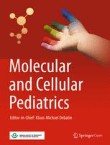Does allogeneic stem cell transplantation in survivors of pediatric leukemia impact regular physical activity, pulmonary function, and exercise capacity?
Allogeneic hematopoietic stem cell transplantation (allo-HSCT) has improved survival in high-risk childhood leukemia but is associated with long-term sequelae such as impaired pulmonary function and reduced ex...
